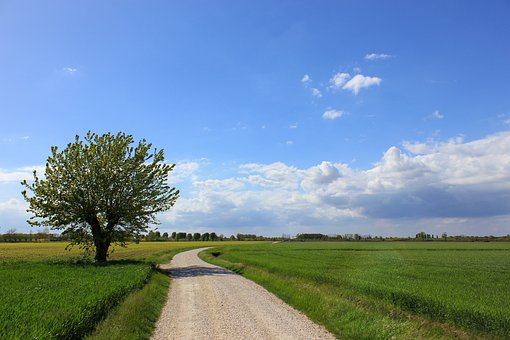Dailycsr.com – 31 January 2018 – India possesses the first “national policy” in the world on agro-forestry, which is also known as “trees on farms”, as farmers located in various “agro-climatic zones” need to be guided on which plants to grow. Now a “new book” has come out which can be of help in this matter.
The Department of Agricultural Research and Education’s secretary, Trilochan Mohapatra, who is also the “director-general of the Indian Council of Agricultural Research”, said:
“With multiple research initiatives underway, a lot of scientific knowledge on different species of agroforestry has been generated. Promising Agroforestry Tree Species in India is an assemblage of useful knowledge. This book will be useful for farmers, planners, forest officials, and teachers and students of agroforestry.”
India is pioneering the way in promoting “research and education” in the field of agro-forestry, in an attempt to plant “more trees” on land that are being cultivated. As the natural forests of the world are declining and “weather patterns” are increasingly varying due to the effects of climate change, governments, scientists as well as farmers are seeing trees as solution to “more resilient agriculture”, which decreasing “pressure on forests” and increasing “carbon storage”.
India and many other countries have been traditionally practicing agro-forestry, but India, so far, has been the first and the only country to have a “national policy on agroforestry” launched in the year of 2014.
The new book that has been published provides information of “characteristics of useful trees”. Moreover, the same will also “complement the policy” and hasten its adoption across the country. South Asia’s Director of the “World Agroforestry Centre”, Javed Rizvi, added:
“The National Agroforestry Policy of India was followed by a sub-mission on agroforestry with an investment of about USD 147 million by the Federal Government. It mainstreamed agroforestry into the agricultural agendas of state government. Given that research in agroforestry has significantly developed in India in recent years, we saw a need to consolidate the massive amount of information about each tree species. The new publication outlines botanical characteristics, propagation for differing agroforestry systems and climatic zones, and cultural appropriateness.”
Long-term collaboration between the “Central Agroforestry Research Institute of the Indian Council of Agricultural Research” and the “World Agroforestry Centre” has provided the outcome of “Agroforestry Tree Species in India”. As many as twenty fine agro-forestry species have been identified given their “usefulness for timber, fuel, fodder, fruit, biofuel, raw material for industrial use and medicinal ingredients”.
While, the Institute’s Director, Dr Om Prakash Chaturvedi, stated:
“Trees used in agroforestry systems are vital. They reflect farmers’ choices as well as market demand. The Central Agroforestry Research Institute and All India Coordinated Research Project on Agroforestry identified important agroforestry tree species, which have been adopted by the National Agroforestry Policy and are expected to increase farmers’ use of agroforestry.”
References:
3blmedia.com
The Department of Agricultural Research and Education’s secretary, Trilochan Mohapatra, who is also the “director-general of the Indian Council of Agricultural Research”, said:
“With multiple research initiatives underway, a lot of scientific knowledge on different species of agroforestry has been generated. Promising Agroforestry Tree Species in India is an assemblage of useful knowledge. This book will be useful for farmers, planners, forest officials, and teachers and students of agroforestry.”
India is pioneering the way in promoting “research and education” in the field of agro-forestry, in an attempt to plant “more trees” on land that are being cultivated. As the natural forests of the world are declining and “weather patterns” are increasingly varying due to the effects of climate change, governments, scientists as well as farmers are seeing trees as solution to “more resilient agriculture”, which decreasing “pressure on forests” and increasing “carbon storage”.
India and many other countries have been traditionally practicing agro-forestry, but India, so far, has been the first and the only country to have a “national policy on agroforestry” launched in the year of 2014.
The new book that has been published provides information of “characteristics of useful trees”. Moreover, the same will also “complement the policy” and hasten its adoption across the country. South Asia’s Director of the “World Agroforestry Centre”, Javed Rizvi, added:
“The National Agroforestry Policy of India was followed by a sub-mission on agroforestry with an investment of about USD 147 million by the Federal Government. It mainstreamed agroforestry into the agricultural agendas of state government. Given that research in agroforestry has significantly developed in India in recent years, we saw a need to consolidate the massive amount of information about each tree species. The new publication outlines botanical characteristics, propagation for differing agroforestry systems and climatic zones, and cultural appropriateness.”
Long-term collaboration between the “Central Agroforestry Research Institute of the Indian Council of Agricultural Research” and the “World Agroforestry Centre” has provided the outcome of “Agroforestry Tree Species in India”. As many as twenty fine agro-forestry species have been identified given their “usefulness for timber, fuel, fodder, fruit, biofuel, raw material for industrial use and medicinal ingredients”.
While, the Institute’s Director, Dr Om Prakash Chaturvedi, stated:
“Trees used in agroforestry systems are vital. They reflect farmers’ choices as well as market demand. The Central Agroforestry Research Institute and All India Coordinated Research Project on Agroforestry identified important agroforestry tree species, which have been adopted by the National Agroforestry Policy and are expected to increase farmers’ use of agroforestry.”
References:
3blmedia.com


 Indian Farmers Will Have A Guide To Help Them Into Selecting Agroforestry Species
Indian Farmers Will Have A Guide To Help Them Into Selecting Agroforestry Species





 Companies
Companies